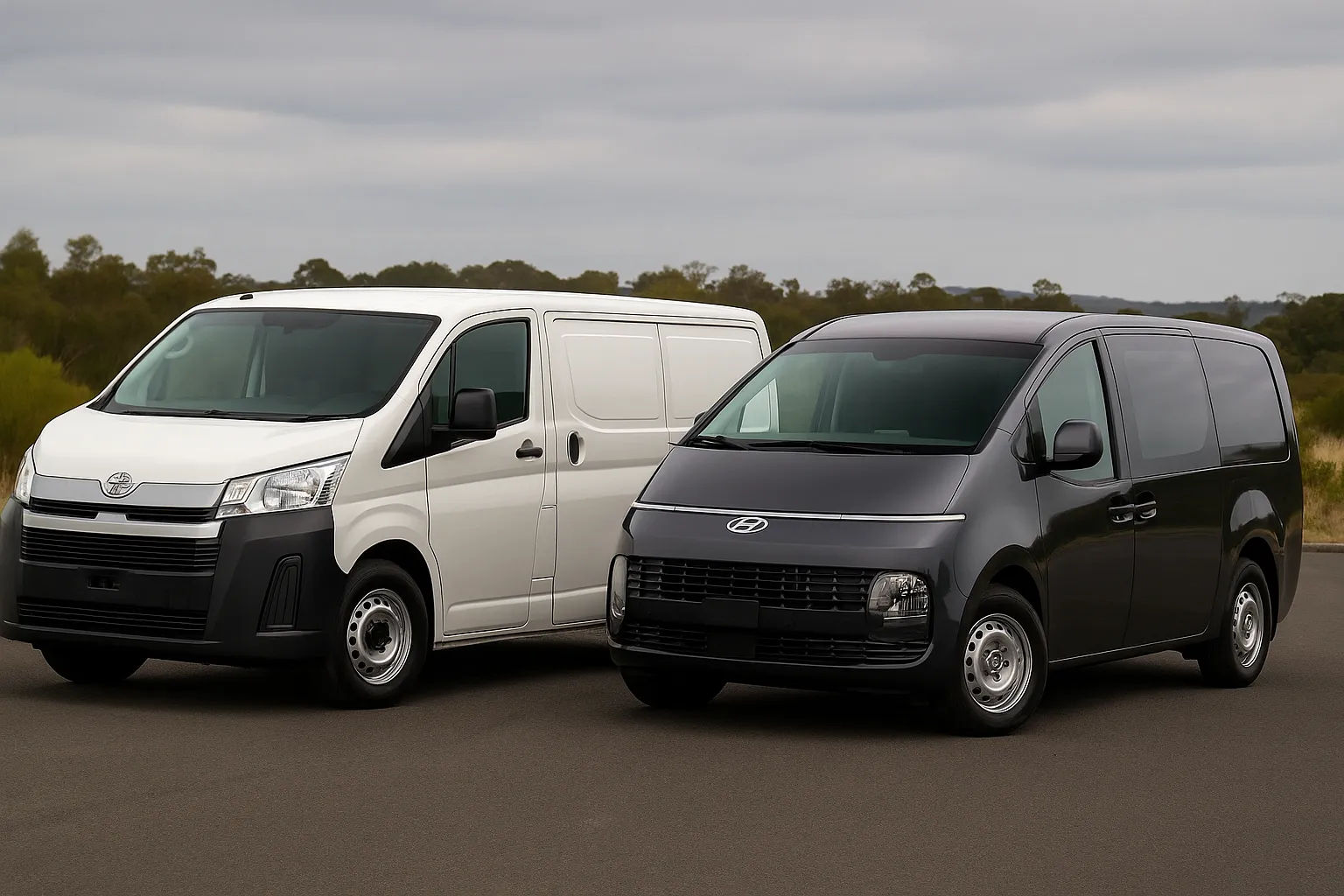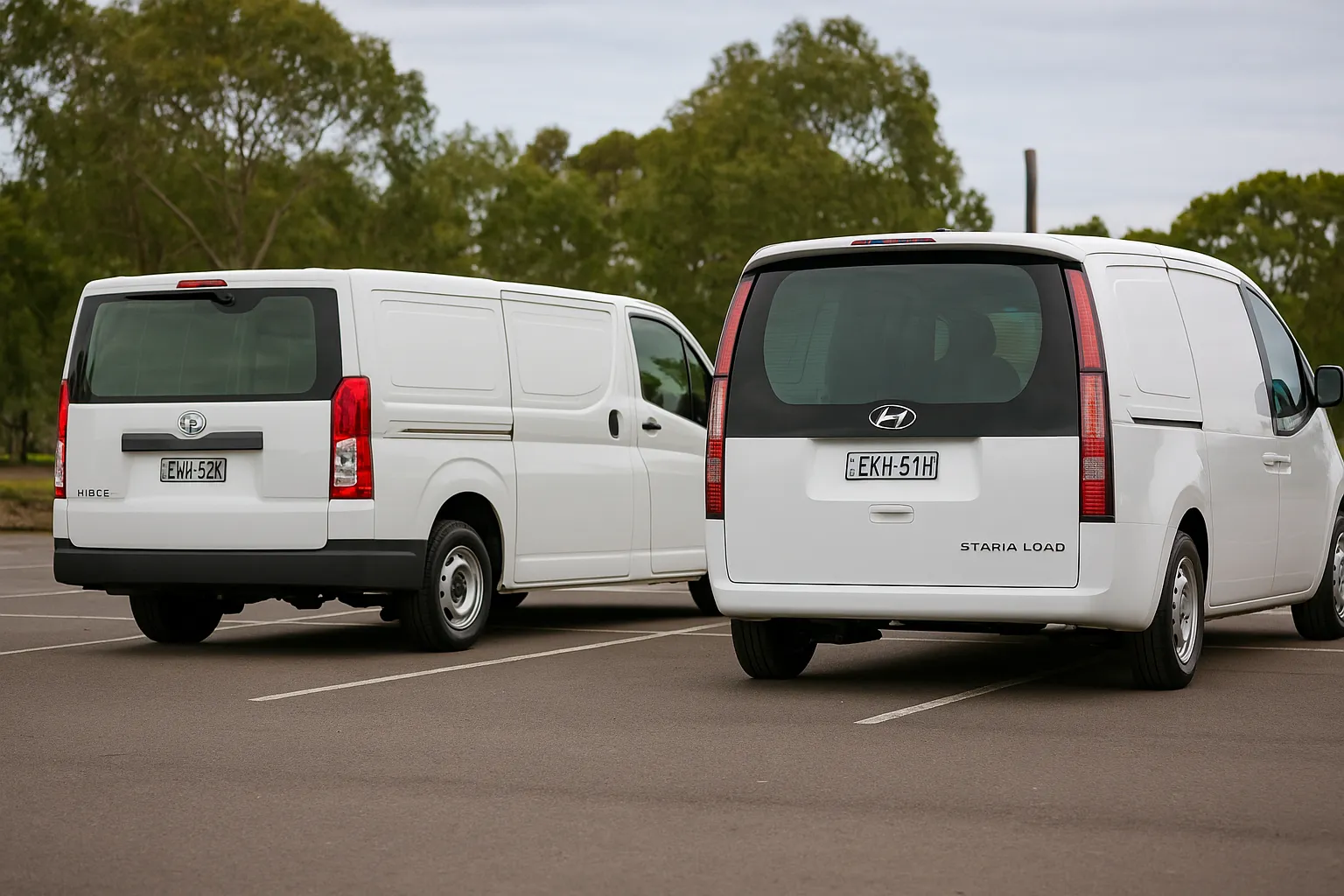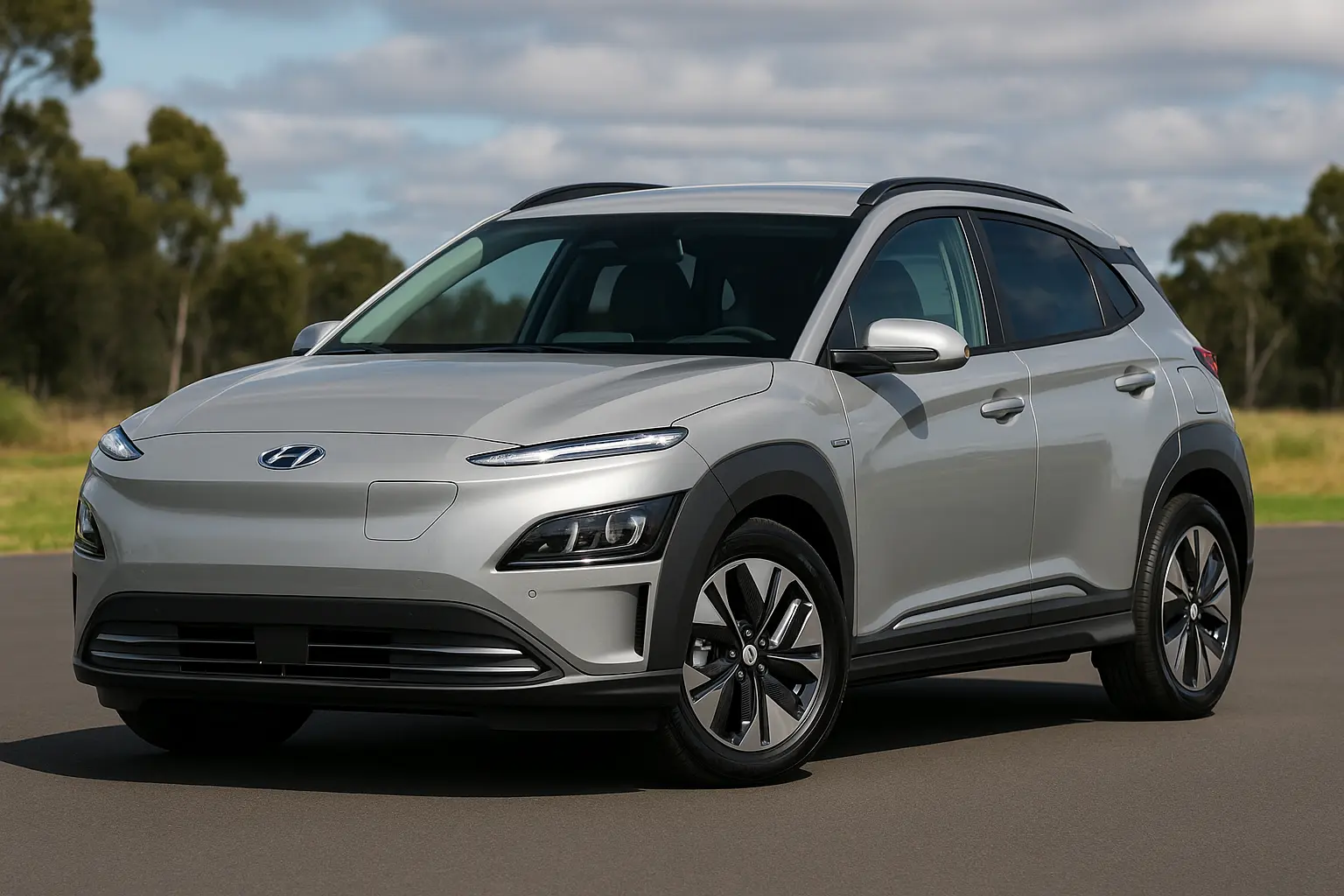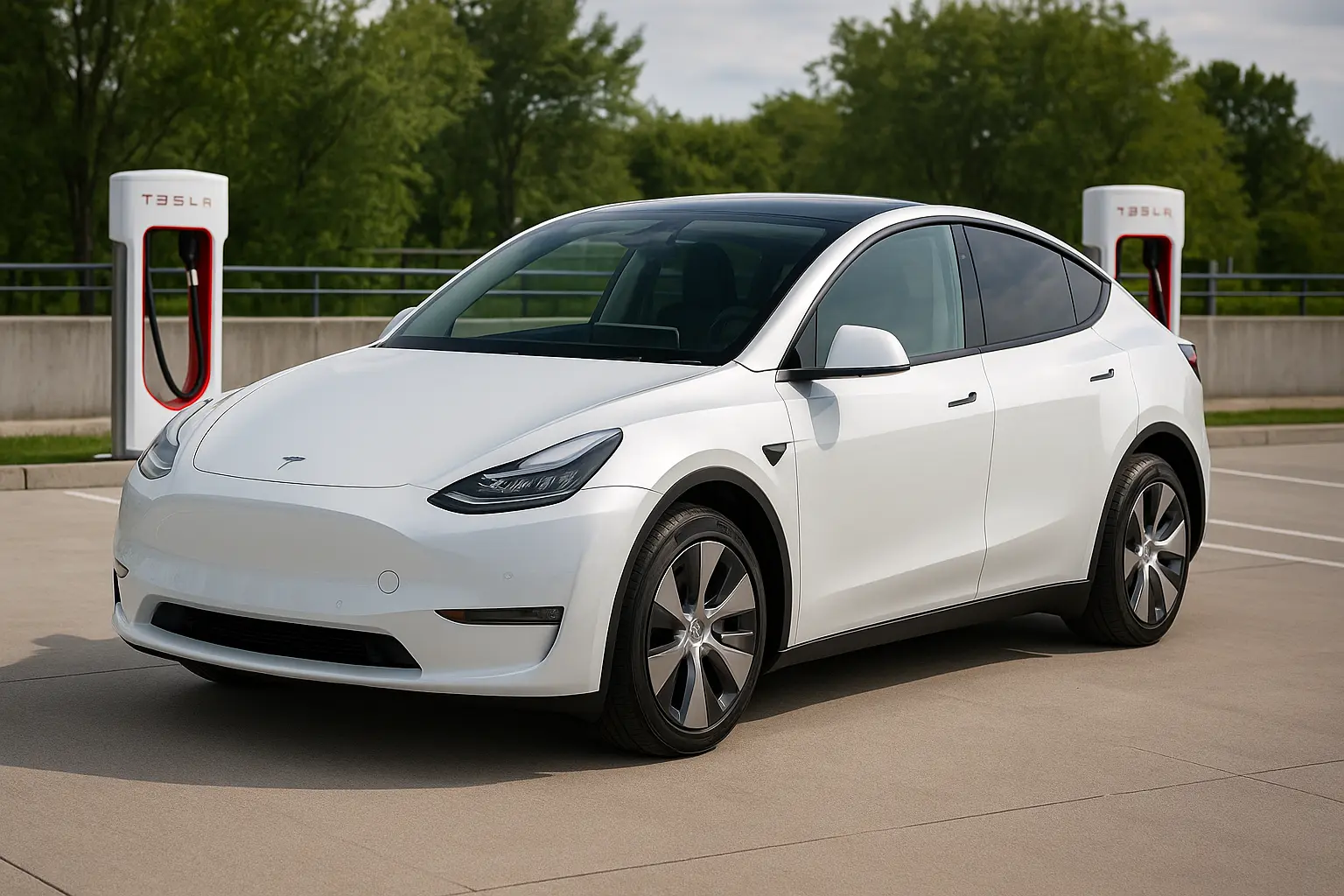If you run a delivery business, are a mobile tradie, or manage a service fleet in Australia, chances are you’ve either driven or considered the Toyota HiAce or the Hyundai Staria Load. In 2025, these two continue to dominate the commercial van segment, but which one offers the best bang for your buck? In this detailed review, we break down everything from powertrain and cargo capacity to cabin tech, safety, and long-term running costs to help Aussie business owners make the smart choice.

🔍 Overview – A Van Showdown That Matters
When it comes to commercial vans in Australia, two names keep cropping up: the legendary Toyota HiAce, and the futuristic-looking yet practical Hyundai Staria Load. Both vans have built strong reputations — the HiAce as a durable workhorse and the Staria Load as a modern alternative with strong value and features.
Let’s explore how these vans compare in 2025 and which one makes the better business investment.
📊 1. Price and Variants
2025 Toyota HiAce:
- Starting Price: ~$48,000 (drive-away)
- Variants: LWB Van, SLWB Van, Crew Van, Commuter Bus
- Drivetrain: RWD
- Fuel Type: Diesel
2025 Hyundai Staria Load:
- Starting Price: ~$47,000 (drive-away)
- Variants: 2-Seater Van, 5-Seater Crew Van, Liftback or Twin Swing rear doors
- Drivetrain: FWD
- Fuel Type: Diesel
Verdict: Pricing is very close, but Toyota’s broader variant lineup offers more flexibility for different business needs.
🚗 2. Engine and Performance
Toyota HiAce (2025)
- Engine: 2.8L 4-cylinder turbo-diesel
- Power: 130kW
- Torque: 450Nm
- Transmission: 6-speed automatic or manual
- Drive Type: Rear-wheel drive
Hyundai Staria Load (2025)
- Engine: 2.2L 4-cylinder turbo-diesel
- Power: 130kW
- Torque: 430Nm
- Transmission: 8-speed automatic
- Drive Type: Front-wheel drive
Verdict: Power output is nearly identical, but the HiAce offers stronger torque and RWD handling, making it slightly better for heavy loads and towing on Aussie terrains.
📦 3. Cargo Space and Payload
Toyota HiAce:
- Cargo Volume: Up to 9.3 m³ (SLWB)
- Payload: Up to 1,240 kg
- Tow Rating: 1,500 kg braked
Hyundai Staria Load:
- Cargo Volume: 4.9 m³ (Crew Van) to 5.2 m³ (Van)
- Payload: Up to 1,090 kg
- Tow Rating: 2,500 kg braked
Verdict: The HiAce wins in cargo volume, but the Staria Load offers superior towing. If your business involves trailers, the Hyundai takes the lead.
🛠️ 4. Practicality and Dimensions
| Feature | Toyota HiAce (SLWB) | Hyundai Staria Load |
|---|---|---|
| Length | 5,915 mm | 5,253 mm |
| Width | 1,950 mm | 1,997 mm |
| Height | 1,990 mm | 2,000 mm |
| Wheelbase | 3,860 mm | 3,273 mm |
| Turning Circle | 12.0 m | 11.9 m |
Verdict: The HiAce is longer and roomier for cargo, while the Staria Load is easier to manoeuvre in tight city streets.
🖥️ 5. Cabin and Interior Features
HiAce Highlights:
- 8-inch touchscreen
- Apple CarPlay/Android Auto
- Hard-wearing interior trim
- Ample headroom
- Manual air conditioning
- Basic but durable
Staria Load Highlights:
- 8-inch infotainment with wireless Apple CarPlay/Android Auto
- Smart key & push-button start (optional)
- Car-like dashboard with digital display
- More car-like ergonomics
- Optional leather seats
Verdict: The Hyundai Staria Load feels more premium and tech-forward. It provides a better cabin experience for long workdays.
🔐 6. Safety Features
Both vans are packed with essential safety tech — a major plus for tradies and fleet buyers.
Toyota HiAce:
- 5-Star ANCAP Safety Rating
- AEB with pedestrian/cyclist detection
- Adaptive cruise control
- Lane departure warning
- Blind-spot monitoring
- Rear cross-traffic alert
Hyundai Staria Load:
- 5-Star ANCAP Safety Rating
- AEB with pedestrian & junction detection
- Blind-spot collision avoidance
- Lane-follow assist
- Rear occupant alert
- Driver attention warning
Verdict: Both vans are equally safe, but Hyundai adds some advanced driver alerts and safety assist systems as standard.
⛽ 7. Fuel Efficiency
Toyota HiAce:
- Fuel Use: ~8.2L/100km (combined)
Hyundai Staria Load:
- Fuel Use: ~7.0L/100km (combined)
Verdict: The Staria Load is more fuel-efficient, saving your business money in the long run, especially for high-mileage delivery use.
🔧 8. Maintenance & Ownership Costs
HiAce:
- Toyota’s capped-price servicing
- 12-month/15,000km intervals
- Excellent parts availability
- Resale value: High
Staria Load:
- Hyundai’s Lifetime Service Plan
- 12-month/15,000km intervals
- Slightly cheaper service costs
- Resale value: Medium
Verdict: Toyota still holds the edge in long-term ownership confidence, but Hyundai’s capped plans are affordable too.
🔄 9. Resale and Reliability
Toyota HiAce:
- Legendary reliability
- Retains value better over time
- Fewer mechanical issues reported
Hyundai Staria Load:
- Good warranty (5 years/unlimited km)
- Reliability improving, but still behind HiAce legacy
- Higher depreciation rate
Verdict: HiAce dominates resale value and trust, especially for fleet buyers and used vehicle investors.
🧰 10. Business Use and Customisation
Both vans can be adapted for trades like plumbing, courier delivery, HVAC services, mobile mechanics, etc.
- Toyota offers better aftermarket support: shelving, bulkheads, refrigeration kits
- Hyundai provides more modern fittings: including electronic locks, USB ports, and smart fleet tracking integration
Verdict: Toyota is more established for custom setups, but Hyundai is catching up quickly with digital fleet tools.
✅ Final Verdict – Which Van Wins in 2025?
| Category | Winner |
|---|---|
| Engine Torque | Toyota HiAce |
| Towing Capacity | Hyundai Staria Load |
| Cargo Volume | Toyota HiAce |
| Cabin Comfort | Hyundai Staria Load |
| Safety Technology | Hyundai Staria Load |
| Fuel Efficiency | Hyundai Staria Load |
| Long-Term Reliability | Toyota HiAce |
| Tech Features | Hyundai Staria Load |
| Customisation Options | Toyota HiAce |
| Resale Value | Toyota HiAce |
Overall Winner: Tie – Depends on Business Needs
- Choose Toyota HiAce if your business values cargo volume, durability, and resale value.
- Choose Hyundai Staria Load if you want comfort, safety tech, and fuel efficiency.
💼 Summary for Aussie Business Buyers
If you’re a sole tradie needing a van that just works every time, the HiAce is hard to beat. But if your business is urban-based and you value cabin features and low fuel bills, the Staria Load is seriously compelling. Both are strong contenders in 2025 and whichever you choose, your business will be in good hands — or wheels.
Leave a comment
Your email address will not be published. Required fields are marked *




















